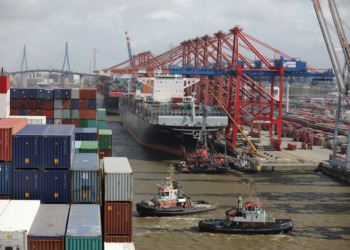In previous volumes of IMPAKTER’s weekly Friday ESG Regulations Update series, we’ve discussed the latest sustainability regulations within the EU, ongoing tariff diplomacy, and new regional mining projects. These are all essential areas to consider in the approach to global regulatory changes.
In light of these developments, Assent, a key player in supply chain sustainability management, hosted a webinar titled “Stay Ahead of Global Regulatory Changes: Your Q2 2025 Compliance Roadmap” this Tuesday. During the event, Craig Howard, Senior Regulatory Expert, and Jared Connors, Sustainability Director at Assent, provided a comprehensive breakdown of the latest regulatory changes on a global scale.
Here, we’ll offer a concise overview of the upcoming changes and modifications you should be aware of, including updates related to California Proposition 65, REACH, state-level PFAS bans, the EU Omnibus Package, and many others.
1. Packaging & Packaging Waste Regulation (PPWR)
- The Packaging & Packaging Waste Regulation (PPWR) aims to minimize the quantity of packaging and waste generated by requiring all packaging across the EU market to be sustainable. This regulation limits heavy metals and the presence of PFAS in food-contact packaging. Moreover, it aims to minimize the use of harmful substances in packaging. Lastly, it introduces guidelines for companies enforcing a minimum recycled content for plastic packaging and recyclability standards based on packaging design.
2. EU Omnibus Regulation
- As mentioned, we’ve covered the EU Omnibus Regulation in one of our previous articles, so we’ll point out some aspects of its modifications. This regulation introduces a series of measures aimed at simplifying and condensing sustainability reporting standards for companies and organizations. It is expected to reduce businesses’ bureaucratic and administrative burdens while ensuring greater efficiency in compliance. Additionally, its modifications will influence how companies demonstrate their commitment to sustainability and uphold their obligations.
3. EU POPs Regulation
- According to Craig Howard, the EU POPs Regulation represents the European Union’s adoption of the requirements of the Stockholm Convention, focusing on reducing organic substances that persist in the environment, accumulate in living organisms, and pose risks to human health and the environment. The EU is nearing the addition of two Persistent Organic Pollutants (POPs) to their list: polychlorinated biphenyls (PCBs) and tetra-, penta-, hexa-, hepta-, and decabromodiphenyl ethers (PBDEs). This development will impact businesses and companies that deal with or use PCBs and PBDEs in their products.
4. Proposition 65 (Safe Drinking Water and Toxic Enforcement Act of 1986)
- Proposition 65 aims to protect California’s drinking water sources from contamination by chemicals and toxic substances, with the state maintaining an updated list of chemicals known to cause cancer or reproductive toxicity. This proposition is particularly significant for companies that export or manufacture products within California. Recent updates include the addition of a new toxicity endpoint for bisphenol S and the inclusion of vinyl acetate on the list of substances covered by the proposition. As a result, products involving exposure to vinyl acetate will now require appropriate labeling.
5. Restriction of Hazardous Substances in Electrical and Electronic Equipment (RoHS)
- The Restriction of Hazardous Substances in Electrical and Electronic Equipment (RoHS) Directive aims to limit the use of certain hazardous substances in electrical and electronic equipment. The Annex III List of Technical Exemptions under this directive, which allows companies to place their products within the EU, is currently being revised, and exemptions may be modified. This regulation affects all businesses that manufacture or work with products containing electronic and electrical components and later export them to the EU.
6. Registration, Evaluation, Authorization, and Restriction of Chemicals (REACH) Candidate List
- This regulation primarily focuses on regulating the use and supply of Substances of Very High Concern (SVHCs). The European Chemicals Agency (ECHA) recently updated the REACH Candidate List by adding five new SVHCs, compelling companies to be aware of the presence of these substances in their products and merchandise. As a result, these substances are likely to face potential restrictions soon.
7. EU Member State PFAS Laws
- For quite some time, the EU has been implementing regulations to reduce the use and manage the exposure of Per- and Polyfluoroalkyl Substances (PFAS). However, progress on PFAS restrictions within the EU has been slow and uneven, prompting individual member states, such as the Netherlands and France, to take independent action. As a result, more fragmentation and decentralization of PFAS laws are expected.
8. U.S. States Considering PFAS Laws
- Many U.S. states are actively working on legislation to eliminate PFAS from food packaging and other consumer products, aiming to reduce human and environmental exposure. As seen in the EU, state laws in the U.S. are not uniform, creating potential business challenges. To address this fragmentation, some states align their definitions of PFAS, focusing on consumer goods with intentionally added PFAS. Additionally, several states are introducing disclosure measures and registration processes to regulate products containing these harmful substances.
Opportunities for Growth and Innovation
As global regulatory landscapes continue to evolve, staying ahead of changes like those in the EU and U.S. is essential for businesses seeking to thrive in a sustainability-driven future.
With each new regulation—from packaging and hazardous substance restrictions to the management of chemicals like PFAS—companies must adapt swiftly to not only remain compliant but to ensure they are leaders in sustainable practices.
The ongoing changes signal a clear call to action: those who act proactively will be better positioned to navigate the complexities and updates of international markets.
Stay informed, stay ahead, and turn regulatory challenges into opportunities for growth and innovation.
___________________________________________________________________________________
Editor’s Note: The opinions expressed here by the authors are their own, not those of impakter.com — Cover Photo Credit: MATT FOXX










